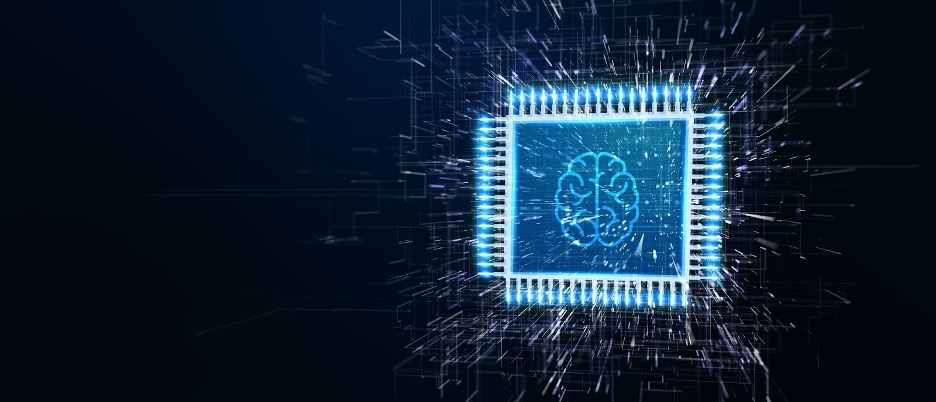What Is Machine Learning & Why Does It Matter?

Wondering about machine learning? We explain what it is, how it works, and why it is essential in today’s modern data-intensive applications.
What is machine learning?
Machine learning, a subset of artificial intelligence, is the ability of computer systems to learn to make decisions and predictions from observations and data. Machine learning is used in many applications, including life sciences, financial services, and speech recognition.
What Do I Need to Know About Machine Learning?
Machine learning is often used in the same context as AI (more on that later). Still machine learning is a particular discipline related to how machines can learn or be taught to make independent decisions.
These machines are often called “machine-learning algorithms,” because at the heart of many ML applications is an algorithm or series of algorithms that drive how a given machine learns from data.
A system builds models based on data sets (often called “training sets”). It then uses that model to apply decision-making acumen to real-world situations. While this is a rather broad definition, it also points to the vast landscape of applications that machine learning inhabits. For example, you will often find ML applied in various industries, such as finance, insurance risk management and statistics, life science computation and statistical modeling, robotics, speech recognition, and genomics.
More specifically, machine learning can refer to any number of approaches or methods for the teaching and training algorithms to perform tasks. Some of these methods include the following:
- Supervised Learning: Supervised-learning algorithms use training data and a set of training outcomes to determine how they should model and learn from that data. Given a data set of inputs, the machine-learning algorithm will also receive a set of optimal outputs. Represented through matrices and arrays of data relationships, machine learning algorithms can learn how to optimize specific processes by learning how to accurately model those processes between the inputs and outputs.
- Unsupervised Learning: Unsupervised learning, as you may infer from its name, provides a machine-learning algorithm with a training data set containing only inputs. These algorithms can then find patterns in the data and, through practices like density estimation and cluster analysis, develop metrics about optimizing its operations. The data an unsupervised ML algorithm receives will usually be unstructured or unclassified.
- Semi-Supervised Learning: A hybrid of the previous machine learning methods, this approach provides the learning algorithm with unstructured (unsupervised) data. At the same time, it includes a smaller portion of labeled or structured (supervised) training data. This often supports more rapid and effective learning on the part of the algorithm.
- Reinforcement Learning: Often used for agents within a simulated environment (for example, an artificial agent in a video game), this approach leverages the concept of cumulative award and Markov decision chains to teach optimal actions in dynamic settings. They are often used in online games and non-gaming environments like swarm intelligence modeling, simulations, and genetic-modeling algorithms.
There are also several categories of approaches to learning, including using statistical inference or different learning techniques around data structures or locations.
Is Machine Learning the Same as AI?
Machine learning is not artificial intelligence. They are closely related to one another in several ways but distinct in others.
You can break down the differences as follows:
- Artificial Intelligence is a broad, and sometimes ill-defined, category of theory, philosophy, science, and engineering surrounding questions of artificial, intelligent agents. When people talk about artificial intelligence, they often refer to the broader set of questions and applications around intelligent machines. For example, what constitutes an intelligent machine? Can the machine do the same things that humans can? In many ways, AI will encompass several subsets of technologies and research, including machine learning, applications, and investigation. A chess-playing machine could be considered an artificial intelligence to some extent.
- Machine Learning is a subset of AI that refers specifically to studying and implementing learning machines that can ingest data and model real-world results from them.
Machine learning can therefore be thought of as a part of AI. Machine-learning algorithms form a core part of AI research, but they aren’t the only focus of that area. Likewise, discussing AI might not include a deep dive into machine-teaching techniques.
Is Machine Learning the Same as Deep Learning?
Machine learning is not the same as deep learning, although they are closely related.
Deep learning is a form of machine learning that leverages the unique properties of neural networks. A neural network is a technical construct that attempts to model the learning capabilities of the human brain. Instead of relying on linear algorithms (that is, thinking like machines), neural networks model a network of “nodes” that each contain simple input and output commands. Each node doesn’t do much individually, but their emergent functionality combines to perform more extensive and complex tasks.
A deep neural network uses layers of these node networks to break down further complex tasks that have several decision-making layers. One such application of deep learning is to run intelligent image recognition. Using a deep neural network, the machine breaks down an image into smaller and smaller comparisons at deeper and deeper levels. As patterns are located on deeper levels, the results percolate through the network and inform higher-level functions.
If you were to map AI, machine learning, and deep learning, you’d see a nest relationship between them. AI is a broad subject that contains machine learning as a subdiscipline. Following that, deep learning is a highly specialized and advanced form of machine learning.
What Are Some of the Elements of Modern Machine Learning?
While machine learning has evolved over the years, modern advances in the field have come as a result of a combination of several technologies and innovations, including the following:
- Big Data: With the suitable learning algorithms, a large set of data can be the key to unlocking intelligent decision-making. With the ongoing expansion of the internet, the cloud, and always-on platforms, machine learning developers are leveraging massive data sets to train algorithms that weren’t thought possible 50 years ago. These sets, often terabytes in size, give researchers significant resources to help train their algorithms in highly specialized impact areas (finance, life science, etc.).
- Cloud Platforms: All that data has to come from somewhere, and cloud platforms have been a significant contributor to that effort. More importantly, cloud computing brings processing power to bear that was not thought possible in even the latter days of machine-learning development in the 20th century.
- High-Performance Processing, Storage, and Retrieval: Data and access are only as good as how you use them. Building off big data cloud platforms, more specialized file systems, and hybrid-cloud environments are now optimizing the ingestion, organization, transfer, and analytics of massive quantities of data used to train and modify machine-learning algorithms. Additionally, modern hardware used for machine learning often turns away from traditional CPU architecture to use more suitable Graphical Processing Units (GPUs) that handle parallel processing more efficiently.
What Are Some Real-Life Examples of Machine Learning?
Machine learning is making itself known in various industries and applications, from consumer products to enterprise platforms. Some of these examples include the following:
- Self-Driving Cars: The combination of robotics/sensors and deep-learning algorithms are at the core of the mission of many manufacturers building self-driving cars. Machine learning is critical to how cars can learn from data and continually take in and model data from the outside world in real-time.
- Healthcare: Machine learning shapes how healthcare works from administration to insurance and the actual practice of patient care. Many organizations are using machine-learning platforms to optimize how they handle patient records, while others are using them to help doctors notice patterns in MRIs or suggest potential treatment paths.
- Customer Relations: From a business perspective, machine learning is a critical part of many major CRM products, including top contenders like Microsoft Dynamics and Salesforce. From a customer experience perspective, machines drive innovative new ways to engage customers through chatbots and behavior-targeting marketing.
- Analytics: Business intelligence is becoming increasingly sophisticated. Data-analytics platforms push forward with machine learning tools that can extrapolate patterns and insights from large data sets to inform more complex business decision-making.
Conclusion
Some platforms already have machine learning integrated into their feature sets. But more advanced implementations of machine learning in areas like complex risk modeling or genomic sequencing and modeling will typically call for a large, comprehensive cloud environment with high-performance computing and data management.
WEKA is a cloud-native platform that provides all of these features and more to support your machine- and deep- learning workloads.
These features include the following:
- The fastest file interface (with the highest IOPS) at S3 economics
- Autoscaling storage for high-demand performance
- On-premises and hybrid- cloud solutions for testing and production
- Industry-best, GPUDirect Performance (113 GB/s for a single DGX-2 and 162 GB/s for a single DGX A100)
- In-flight and at-rest encryption for GRC requirements
- Agile access and management for edge, core, and cloud development
- Scalability up to exabytes of storage across billions of files
If you’re working with extensive machine- learning or AI workloads and want to learn more about a cloud storage solution that will empower your efforts, contact us to learn more about WEKA.





